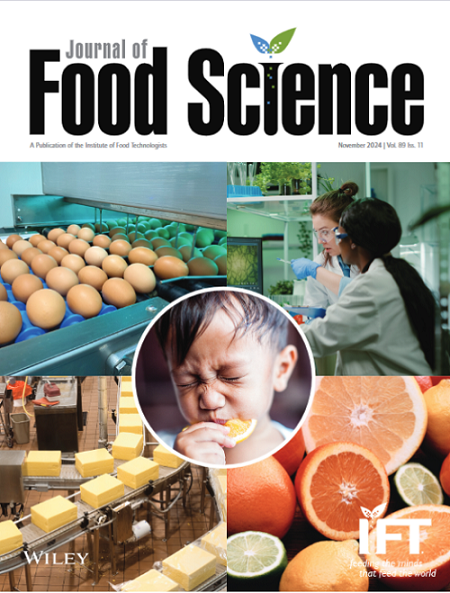Simultaneous extraction and purification of polysaccharides and proteins from Pleurotus ostreatus using an aqueous two-phase system
Abstract
Pleurotus ostreatus is a nutrient-dense edible fungus renowned for its delicate texture, appealing flavor, and numerous potential health benefits. Simultaneous extraction within the framework of food resource processing facilitates the concurrent isolation and analysis of multiple target compounds. In this study, an ethanol/salt aqueous two-phase system (ATPS) was employed to extract polysaccharides (PS) and proteins from P. ostreatus. The impacts of pH, inorganic salts, and temperature on ATPS phase formation were systematically evaluated. The ethanol/K₂HPO₄ system demonstrated superior selective extraction performance under optimal conditions: 25.16% ethanol (w/w), 15.91% K₂HPO₄ (w/w), and 24.11% crude extract (w/w) without pH adjustment. The highest recovery efficiency of PS and proteins were 90.29% ± 0.24% and 76.35% ± 0.15%, respectively. The simultaneous extraction efficiency of PS and proteins was 12.49% ± 0.14% and 20.34% ± 0.09%, respectively. As a comparison, hot water extraction and alkali extraction methods were performed to assess the impact of ATPS on the physicochemical properties of PS and proteins. SDS-PAGE and HPLC analyses confirmed that the protein subunit distribution was consistent across different extraction methods, whereas the ATPS-extracted PS exhibited characteristics of homogeneous heteropolysaccharides with a molecular weight of 28.8 × 10⁶ Da. Monosaccharides such as mannose, glucuronic acid, and glucose were identified in the PS hydrolysate. The results demonstrate that ATPS preserves the physicochemical integrity of the extracted substances. This method holds promise for unlocking new possibilities and has the potential to become an effective method for large-scale extraction and purification of polysaccharides and proteins from edible fungi.
Practical Application
This work describes an efficient and straightforward aqueous two-phase system (ATPS) method for simultaneously extracting polysaccharides and proteins from Pleurotus ostreatus. This approach offers advantages such as reduced operational time, lower toxicity solvents, and minimized byproduct waste for the extraction of bioactive substances from edible fungi. Additionally, the reduced residue levels help to shorten subsequent purification steps. This promising method has potential applications in the food, pharmaceutical, and health product industries.

 求助内容:
求助内容: 应助结果提醒方式:
应助结果提醒方式:


